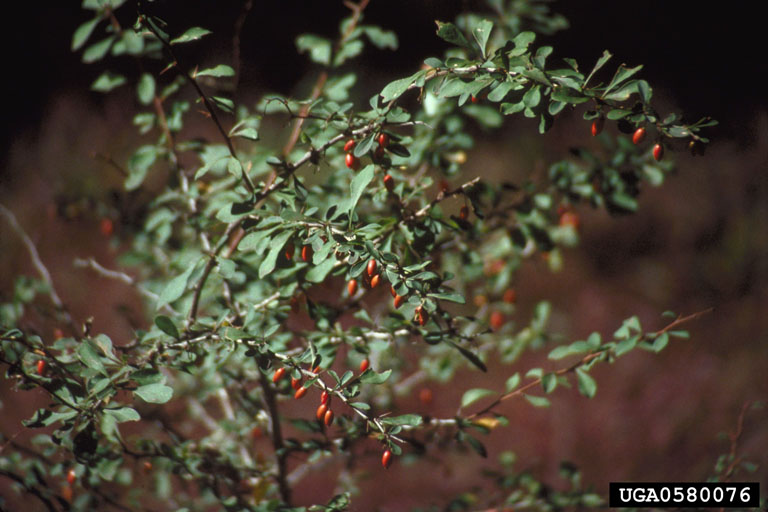Japanese Barberry

Jil Swearingen, USDI National Park Service
Common Name: Japanese Barberry
Scientific Name: erberis thunbergii
Origin: Asia
Description
The Japanese barberry is a dense, woody shrub with spine-bearing branches growing up to about three feet in height. The plant flowers in May and produces red oblong berries that persist into the winter. In the fall, the leaves of the plant turn red and orange.
Habitat
This invader is found in fields, open woods, floodplains, along power lines, and on roadsides. It is able to grow in a variety of soil types.
Threat
The Japanese barberry is able to grow thick enough to outcompete native understory plants, threatening open and second-growth forests.
Management
Mechanical removal in the most effective method of management, causing the least amount of disturbance. A hoe or weed wrench can also be used, however, it is important to remove as much of the root as possible to prevent resprouting. Regular mowing of the area can prevent the barberry from regrowing after it has been removed.
Distribution: View Map
This species has been discovered in the FL-PRISM, more specifically in Steuben County.

